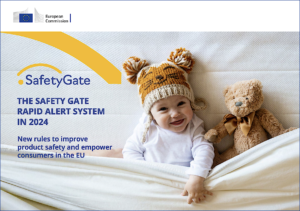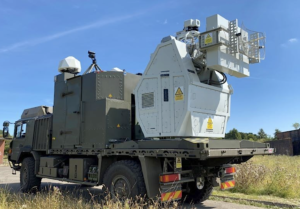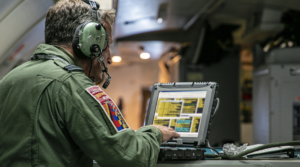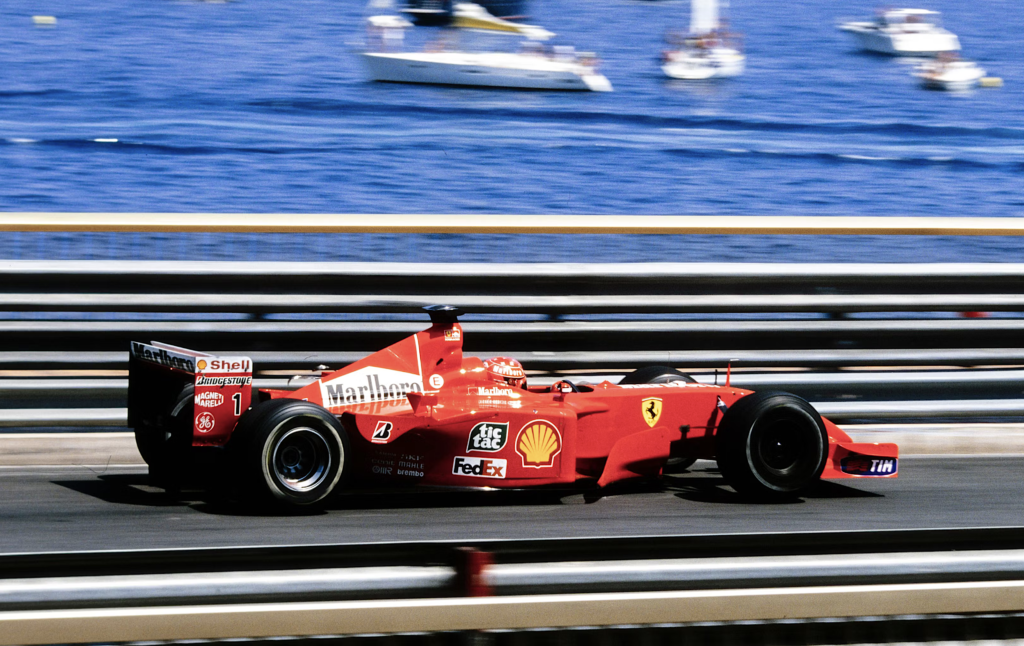| LIST OF DANGEROUS PRODUCTS NOTIFIED IN COMMISSION’S SAFETY GATE 2024 SETS THE PATH FOR INCREASED CONSUMER PROTECTION

The European Commission has unveiled its annual report on Safety Gate, the European Rapid Alert System for dangerous non-food products. The report presents an overview of dangerous products notified in the Safety Gate in 2024. 4,137 alerts were notified last year – the highest ever recorded amount of alerts since the launch of the system in 2003. This increase in alerts demonstrates the growing effectiveness and trust in the Safety Gate system, as authorities are using the platform more often to report and address potential threats to consumer safety. The report also outlines the follow-up actions taken by national authorities of the EU Member States, Norway, Iceland, and Liechtenstein to prevent harm to consumers and stop the sale of hazardous products.
Main findings
Last year, cosmetics (36%) remained the most frequently reported products posing health risks, followed by toys (15%), electrical appliances (10%), motor vehicles (9%) and chemical products (6%).
Chemical ingredients were the main cause of risk in almost half of the alerts. Dangerous chemicals detected included cadmium, nickel and lead in jewellery, as well as allergenic fragrances in body oils, and synthetic chemicals used to soften the plastic, for example in some clothing. 97% of the cosmetics notified were reported to contain BMHCA, a banned synthetic fragrance, which can harm the reproductive system and cause skin irritation.
Alerts registered in the Safety Gate system triggered a robust response from market surveillance authorities with over 4,200 follow-up actions taken to stop the sale of these products or even take them off the market.
Michael McGrath, Commissioner for Democracy, Justice, the Rule of Law and Consumer Protection :
“Year after year, the Commission has strengthened and modernised its tools to ensure that the products entering our homes are safe. At the heart of this effort is the Safety Gate Rapid Alert system, which enables us to swiftly address the risks posed by dangerous goods across the EU. The results speak for themselves, and I look forward to continuing this work to ensure we leave no blind spots in our oversight”.
Next steps
The Commission is working closely with national market surveillance authorities to prepare the first ever product safety sweep. A ‘sweep’ is a set of checks carried out on websites simultaneously to identify breaches of EU consumer law in a particular sector. The aim of the product safety sweep will be to check the products sold on online marketplaces on their compliance with the new General Product Safety Regulation to ultimately enhance the safety of products offered for sale online.
| DATA CENTRES IN ORBIT AND ON THE MOON

It sounds like sci-fi, but Stephen Eisele believes his firm will one day open a data centre on the Moon. ‘By putting the data centre in space, you’re offering unparalleled security,’ says the president of Lonestar Data Holdings.
Last month, the Florida-based company tested a tiny data centre—the size of a hardback book—aboard a lunar lander from Intuitive Machines, launched via SpaceX.
Data centres, which store and process digital information, are usually vast warehouses filled with servers. Lonestar claims lunar data centres would provide ultra-secure, reliable processing, powered by unlimited solar energy.
Lunar data centres might sound like science fiction, but they’re becoming a serious solution to Earth’s growing storage crisis. With AI driving unprecedented demand – projected to grow 20% annually – traditional facilities face impossible pressures: astronomical energy needs, water-guzzling cooling systems, and increasing local opposition to new constructions. The moon offers an elegant answer: limitless space, constant solar power, and natural vacuum cooling. Increasingly, local people don’t want them built near their homes, and as terrestrial options vanish, space becomes the logical next frontier.
Space-based data centres—whether in orbit or on the Moon—could reduce environmental harm, with unlimited solar power and no neighbours to disturb. They’d also offer faster data transfers between spacecraft than ground-based alternatives.
Last summer, a European Commission-backed study by Thales Alenia Space found orbital data centres could ‘transform Europe’s digital landscape’ while being ‘more eco-friendly’. The plan involves 13 satellites (totalling 200m x 80m) with 10MW processing power—equivalent to a medium Earth-based centre. Damien Dumestier, the project’s architect, says rockets must become 10 times cleaner for space centres to be greener. Scaling up to 200MW would require 200 launches, with commercial viability possible by 2037.
But Dr Domenico Vicinanza (Anglia Ruskin University) highlights major hurdles: launch costs (€thousands per kg), cooling challenges (zero-gravity limits traditional systems), space weather risks, and debris damage. Repairs could demand costly manned missions, prolonging downtime.
‘Even with SpaceX’s advances,’ he says, ‘the weight and complexity make this far from straightforward.’
Yet firms like Lonestar remain undeterred, insisting demand drives their plans. ‘We wouldn’t do this if customers weren’t asking,’ says CEO Chris Stott.
The company aims to place a lunar-orbiting data centre by 2027, while rivals like Washington’s Starcloud target 2026 launches.
Stott argues space-based storage offers unique security—data bypasses terrestrial networks, beaming directly to secure ground stations. ‘Like a bank vault,’ he says, ‘the Moon’s distance makes hacking far harder.’
While 1.5-second latency rules out real-time uses, it’s viable for backups and regulated data sovereignty—legally, the hardware acts as ‘an embassy in space’ under the launch nation’s laws.
Early adopters include Florida and the Isle of Man governments.
| BRITISH SOLDIERS TAKE DOWN DRONE SWARM IN GROUNDBREAKING USE OF RADIO WAVE WEAPON

British soldiers have successfully tracked, targeted and defeated swarms of drones in the latest trial of a new directed energy weapon developed in the UK.
- UK-made, invisible radio wave weapon knocks out drone swarms for the first time.
- Weapon has potential to help protect against drone threats as nature of warfare changes.
The trial was completed at a weapons range in West Wales and was the largest counter-drone swarm exercise the British Army have conducted to date.
The weapon system demonstrator is a type of Radiofrequency Directed Energy Weapon (RF DEW) and has proven capable of neutralising multiple targets simultaneously with near-instant effect.
The UK Government has invested more than £40 million in RF DEW research and development to date, supporting 135 highly skilled jobs in Northern Ireland and the South-East of England.
It uses high frequency radio waves to disrupt or damage critical electronic components inside drones, causing them to crash or malfunction.
At an estimated cost of 10p per shot fired, if developed into operational service it could provide a cost-effective complement to traditional missile-based air defence systems.
RF DEW systems can defeat airborne targets at ranges of up to 1km and are effective against threats which cannot be jammed using electronic warfare.
The successful trial comes as drone swarms are increasingly seen in use in frontline combat in Ukraine. UK Defence Intelligence estimates that last year Ukraine had to defend against attacks from more than 18,000 drones.
With national security a foundation for the Plan for Change, the government is significantly increasing the proportion of MOD’s equipment procurement spend on novel technologies, spending at least 10% from 2025-26. It follows the announcement of the biggest sustained increase in defence spending since the end of the Cold War, as the UK will spend 2.5% of GDP on defence by April 2027.
The project has been delivered by Team Hersa – a collaboration between Defence Equipment & Support and the Defence Science and Technology Laboratory. The RF DEW demonstrator has been developed by an industry consortium led by Thales UK.
Successful experiments included the Army taking down two swarms of drones in a single engagement, and the project saw more than 100 drones being tracked, engaged and defeated using the weapon across all trials.
| HYBRID-ELECTRIC AIRCRAFT SECURES $9BN IN PRE-ORDERS

In recent years, the aeronautics sector has seen a surge of bold initiatives. Among them, French start-up Beyond Aero is preparing to unveil the first hydrogen-electric business jet. Meanwhile, companies Turbotech, Safran, and Air Liquide have combined their expertise in the BeautyHyFuel project to develop the first hydrogen-powered aircraft gas turbine. Recently, Electra gained attention with its EL9 Ultra Short, an ultra-quiet hybrid-electric aircraft.
Electra’s hybrid-electric aircraft combines classic design with groundbreaking lift technology, enabling ultra-slow takeoffs and landings—a feat that has secured 2,200 pre-orders worth $9 billion (€8.3 billion).
While eVTOLs (electric vertical take-off and landing) are gaining industry hype after years in labs, Electra took a different approach: delivering on eVTOL promises while slashing operating costs.
Electra unveiled its eSTOL (electric Short Take-off and Landing) concept in 2021—an emissions-free aircraft requiring ultra-short runways. After two years of rigorous ground testing, the company reached a milestone in November 2023: the maiden flight of its piloted Goldfinch EL-2 prototype.
The EL-2 showcased near-silent electric propulsion, taking off in just 30 metres—far quieter than traditional engines. By October 2024, an upgraded two-seat hybrid version with blown wings achieved even better performance: 46-metre take-off and 34.7-metre landing.
But it’s the aircraft’s near-silent operation that truly stands out: during trials, it emitted just 55 decibels at 152 metres altitude – comparable to the sound level of a quiet conversation at home. Building on this success, Electra has confirmed 2,200 pre-orders from 52 operators worldwide for its next-gen hybrid-electric EL9 Ultra Short, with an estimated value of nearly $9 billion (€7.9 billion). This order book ranks among the largest in the fledgling electric aviation sector.
The EL9 stands out with its revolutionary design: eight electric propellers line the wing’s leading edge, while large flaps dominate the trailing edge. This configuration creates a blown lift effect, enabling takeoffs at an exceptionally slow speed of just 56 km/h. The EL9’s power system features a compact turbogenerator that charges an onboard battery, which in turn feeds its eight electric motors. Electra highlights the system’s flexibility – compatible with sustainable aviation fuels (SAF), biofuels, and synthetic fuels.
When operational, the aircraft will offer versatile capabilities:
- Cargo transport (1,361 kg payload with pilot)
- Passenger flights (9 occupants + luggage)
- 2,037 km range at 322 km/h cruise speed
Its low noise footprint and ultra-short takeoff capability enable operations from constrained sites – including fields, urban pads, heliports, or conventional airports. Alongside EL9 testing, Electra continues its technological advancements. The company is currently developing a nine-seat demonstrator, with its maiden flight planned for 2026. While not the final commercial version, this prototype will closely mirror it and will serve as the basis for FAA certification. Staying true to its roadmap, Electra still aims to bring its certified aircraft into service within three years.
| EU AND UKRAINE SIGN AGREEMENT ON UKRAINE’S PARTICIPATION IN COMPONENTS OF THE EU SPACE PROGRAMME
The European Commission and the Government of Ukraine have reached a significant milestone in space cooperation by signing an agreement enabling Ukraine’s participation in three key components of the European Union Space Programme: Copernicus, Space Weather Events (SWE) and Near-Earth Objects (NEO) sub-components. This step further strengthens the longstanding partnership between the EU and Ukraine in the domain of space.
This agreement builds upon the existing cooperation framework established under Chapter 8 of the EU-Ukraine Association Agreement signed in 2014, which covers satellite navigation, Earth observation, space science, and applied space technologies. It also follows the 2018 Copernicus Cooperation Arrangement that laid the groundwork for reciprocal Earth observation data-sharing.
Strengthening Space Collaboration with Ukraine
The EU and Ukraine agreed on a participation in Copernicus, SWE and NEO This Agreement marks the first step in Ukraine’s ever closer association to the Union Space Programme. It was prepared in close consultation with Ukrainian authorities whereas Council was kept regularly informed thereof..
Strategic Benefits for both Ukraine and the EU
Ukraine’s participation will support recovery efforts by enhancing access to EU space services and fostering space innovation:
- Copernicus: Ukraine will benefit from high-quality Earth observation data to support energy and food security, environmental monitoring, and post-war reconstruction planning.
- Space Weather Services: Ukrainian satellite operators will gain access to future forecasting and nowcasting services, providing protection to national space infrastructure from solar and cosmic hazards.
- Near-Earth Objects: Cooperation in this area will bolster Ukraine’s capacity to monitor and respond to risks posed by asteroids and other near-Earth bodies.
The Agreement also promotes capacity building, supports the growth of Ukraine’s space sector, and encourages the exchange of engineering expertise and business practices, thereby enriching the broader European space ecosystem.
While exploring a potential participation in other components of the Union Space Programme, including satellite navigation and secure connectivity, Copernicus and the selected sub-components already offer Ukrainian participation in the Programme.
As part of the EU-Ukraine Association Agreement, space cooperation is well established through the bilateral Working Group on Space Cooperation, which can meet at senior official level as needed. The last meeting took place in 2023 and the Working Group is projected to meet again in 2025.
Ukraine’s progressive association to the EU Space Programme underscores the strategic value of EU-Ukraine relations and affirms the EU’s commitment to supporting Ukraine’s sovereignty, resilience, and technological development. This agreement paves the way for deeper space cooperation and marks a crucial step in Ukraine’s European integration course.
| HOW TO STOP THE NEXT PANDEMIC: ECDC PUBLISHES GUIDANCE TO STRENGTHEN PUBLIC HEALTH PREPAREDNESS IN THE EU/EEA

The European Centre for Disease Prevention and Control (ECDC) has published a set of recommendations for preparedness planning for public health threats, offering tailored guidance for improving readiness for future health emergencies across European Union/European Economic Area (EU/EEA) countries, at both national and regional levels.
Drawing on lessons from the COVID-19 pandemic and the multi-country mpox outbreak of 2022–2023, the report provides practical, phase-based recommendations for health authorities across the EU/EEA.
It complements the EU’s broader preparedness planning framework, published in 2024, and is designed to help public health planners and policy-makers align with EU legislation and the World Health Organization’s (WHO) international standards.
From lessons learned to actionable recommendations
ECDC identified several thematic lessons from recent crises, including the need for sustained investment in public health, strong governance and leadership with a defined role for the public health sector, cross-sectoral collaboration, equitable access to care, and improved risk communication. These are translated into specific recommendations for each phase of the ECDC model of the preparedness cycle:
- Anticipation: Countries are encouraged to conduct cross-sectoral risk mapping, scenario-based planning, and capacity assessments. Tools such as the Joint External Evaluation (JEE) and States Parties Self-Assessment Annual Reporting (SPAR) can support these efforts.
- Response: Establishing national coordination structures, maintaining public health emergency operation centres, deploying real-time analytics, and developing clear escalation protocols are recommended, as well as digital surveillance systems and platforms such as EpiPulse.
- Recovery: After-Action Reviews (AARs) and In-Action Reviews (IARs), with a focus on health system restoration, adaption of existing plans, workforce support, and rebuilding public trust are important for the constant evaluation of the preparedness cycle.
A strong focus on communication
The guidance has a strong focus on risk communication, community engagement, and infodemic management (RCCE-IM). Countries are advised to form multidisciplinary RCCE-IM teams and engage proactively with communities, particularly when implementing public health and social measure.
The priority for workforce readiness
Recommendations include developing surge capacity strategies, supporting healthcare staff’s wellbeing, and investing in recruitment, training, and retention – particularly of the staff working in public health and the management of infectious disease outbreaks.
Tools, country lessons, and technical resources
The guidance features a range of case studies during and after a public health crisis from several EU/EEA countries, the European Commission and ECDC, and includes a catalogue of resources from ECDC, WHO and other international organisations to assist public health planners.
| MILEX 25 MILITARY EXERCISE TESTS READINESS OF EU TO RESPOND TO A CRISIS

Taking place in Hungary with 13 member states participating, MILEX indicates EU’s growing security role.
The European Union Crisis Management Military Exercise (MILEX) is the EU’s premier annual military exercise. It is designed to enhance the EU’s crisis management and rapid deployment capabilities. MILEX also serves to validate the EU’s military readiness.
This year’s MILEX25 was a strategic, operational and tactical level alert and deployment exercise to test and enhance the effectiveness of the EU Rapid Deployment Capacity (EU RDC) and the Military Planning and Conduct Capability (MPCC) under realistic conditions.
Training in Hungary
MILEX25 saw forces from 13 EU Member States training together in Hungary. The exercise presented a complex strategic synchronisation challenge, from a strategic deployment transitioning to a standard field training exercise.
As the exercise brings together joint military forces from 13 countries, it significantly contributes to enhancing EU defence and military cooperation and bolsters interoperability at all levels.
EU as security provider
MILEX25 also highlights a notable milestone by presenting the EU RDC in action. This is evidence that EU has made additional progress as a security provider.
Throughout the training, the MPCC serves as the Operational Headquarters (OHQ) in Brussels while Eurocorps acts as the Force Headquarters (FHQ) in Strasbourg. They collaborate on crisis response planning.
Force of 5 000 troops
The MPCC oversees the deployment of the EU’s RDC, a formidable force up to 5 000 troops – the key deliverable of the EU Strategic Compass. Meanwhile, Eurocorps in its established command element at Pápa Air Base, Hungary, ensures seamless coordination between the OHQ in Brussels and the units deployed on the ground.
| NATO ACQUIRES AI-ENABLED WARFIGHTING SYSTEM

The NATO Communications and Information Agency (NCIA) and Palantir Technologies Inc. (Palantir) have finalised the acquisition of the Palantir Maven Smart System NATO (MSS NATO) for deployment within NATO’s Allied Command Operations (ACO), marking a significant step forward in the modernisation of NATO’s warfighting capabilities.
“NCIA is pleased to collaborate with Supreme Headquarters Allied Powers Europe (SHAPE) and Palantir to deliver MSS NATO to the warfighter, providing bespoke, state-of-the-art AI capabilities to the Alliance, and equipping our forces with the tools necessary to operate effectively and decisively on the modern battlefield,” said Ludwig Decamps, NCIA General Manager.
The MSS NATO capability enables commanders and warfighters to harness cutting-edge artificial intelligence (AI) safely and securely within core military operations. By delivering a common, data-enabled warfighting capability to the Alliance—utilising a broad range of AI applications, from large language models (LLMs) to generative AI and machine learning—MSS NATO enhances intelligence fusion and targeting, situational awareness and planning, and accelerates decision-making.
“We’re proud to support NATO’s commitment to strengthening deterrence through the deployment of an AI-enabled warfighting platform at SHAPE. This partnership underscores the Alliance’s resolve to lead with technological innovation,” said Shon Manasco, Senior Counsellor at Palantir Technologies.
Through MSS NATO, SHAPE aims to speed up the adoption of other innovative capabilities being developed across the Alliance—including emerging AI models, and modelling and simulation—demonstrating the enduring partnership between the North American and European technology bases.
“ACO is at the forefront of adopting technologies that make NATO more agile, adaptable, and responsive to emerging threats. Innovation is central to our warfighting capability. Maven Smart System NATO enables the Alliance to exploit complex data, accelerate decision-making, and in doing so, provides genuine operational value,” said General Markus Laubenthal, SHAPE Chief of Staff.
The procurement of MSS NATO was among the fastest in NATO’s history, taking just six months from defining the requirement to acquiring the system.
| SCHUMACHER’S ICONIC FERRARI UP FOR AUCTION DURING THE FORMULA 1 TAG HEUER GRAND PRIX DE MONACO

At the next Monaco Grand Prix on 24 May 2025, a remarkable event is expected to enthral both collectors and motorsport fans. Fans will have the chance to acquire a valuable relic from Michael Schumacher’s remarkable career when a Ferrari F2001b, a rare piece of Formula One history, goes up for auction.
In Formula One history, the Ferrari F2001b has a unique place. Schumacher piloted this specific chassis in the early going of the 2002 season, which saw him win his fifth World Championship. Ferrari’s supremacy in the early 2000s was aided by the car’s absolutely amazing on-track performance. Given the circuit’s legendary association with glamour and high-stakes racing, its inclusion at the Monaco Grand Prix auction by RM Sotheby’s adds a level of distinction.
The excitement around the auction is evident even though the specifics, such as the projected value and the auction company managing the sale, have not yet been revealed. Fans and collectors are keen to learn more, so it’s best to keep an eye out for updates by following official announcements from the Monaco Grand Prix organisers and respectable auction houses.
A portion of the money raised from the special auction will go to the Keep Fighting Foundation, which continues Michael Schumacher’s humanitarian efforts.
This will be the first time a sale has been conducted during a Grand Prix weekend in the Principality.
| EU LAUNCHES €1.6 BILLION SUPPORT PROGRAMME FOR PALESTINIAN RECOVERY AND RESILIENCE

During the first-ever High-Level Political Dialogue between the European Union and the Palestinian Authority, the European Commission has proposed a comprehensive multiannual support programme worth up to €1.6 billion. This initiative aims to bolster Palestinian recovery and resilience from 2025 to 2027, reaffirming the EU’s commitment to a sustainable Two-State solution and long-term peace in the region.
Three Pillars of Support
The programme is structured around three key pillars:
-
Support to Essential Services
Approximately €620 million in direct budget support will be provided to the Palestinian Authority (PA). This marks an increase from previous years and is intended to help the PA address urgent public administration needs and maintain essential services for its population. Disbursements will be tied to progress on critical reforms in areas such as fiscal sustainability, democratic governance, private sector development, and infrastructure. These reforms are detailed in the “Reform Matrix” agreed by the EU and PA in November 2024. The funds will be channeled through the EU’s PEGASE mechanism, ensuring strict oversight and safeguards.
-
Recovery and Stabilization in West Bank and Gaza
Around €576 million will be allocated to recovery and resilience projects in the West Bank, East Jerusalem, and Gaza, pending improvements in the security situation. The focus will include infrastructure development in sectors like water, energy, and housing. A key component of this support is an annual €82 million contribution to the United Nations Relief and Works Agency for Palestine Refugees in the Near East (UNRWA). This funding ensures UNRWA can continue its vital role in providing humanitarian aid and development services across Palestinian territories and the broader region.
-
Private Sector Development
The programme also includes up to €400 million in loans through the European Investment Bank (EIB) to boost the Palestinian private sector, pending approval by EIB’s governing bodies. This financing aims to stimulate economic activity, generate employment, and foster sustainable growth.
Enhanced International Coordination
To facilitate transparency and coordination, the Commission will establish a dedicated Palestine Donor Platform. This platform will enable the Palestinian Authority to present progress on its Reform Agenda and serve as a space for international partners to coordinate efforts, particularly regarding Gaza’s future reconstruction.
Background and Previous Support
This new initiative builds on a Letter of Intent signed on 19 July 2024 between the EU and the Palestinian Authority, outlining a two-step support approach. The first step was the emergency disbursement of €400 million between July 2024 and February 2025 to address fiscal challenges. The new programme represents the second step and reflects continued dialogue with both Palestinian and international stakeholders.
The EU remains the largest donor to the Palestinians, with over €1.043 billion already allocated from a €1.36 billion envelope for 2021–2024.
Note: This designation does not imply EU recognition of a Palestinian state and does not affect Member States’ positions on this matter.
| A $15 MILLION PAINTING THAT WAS PURCHASED FOR $50 AT A GARAGE SALE IN MINNESOTA DECLARED “NOT AUTHENTIC” BY THE VAN GOGH MUSEUM

The assertion that the picture Elimar, which shows a rough-looking fisherman smoking a pipe, is an authentic piece by Vincent van Gogh has been formally denied by the Van Gogh Museum. This claim followed the presentation of a thorough 456-page report by the New York-based LMI Group International that sought to identify the picture as being by Van Gogh. “We maintain our view that this is not an authentic painting by Vincent van Gogh,” the museum said, reaffirming its 2019 assessment in light of the new material.
LMI Group criticised the Van Gogh Museum for reportedly rejecting their comprehensive results without a close inspection of the actual painting, expressing confusion at the museum’s choice. They emphasised that rather than using an in-person investigation, the museum’s assessment was based on digital reproductions. LMI further noted that the Van Gogh Museum has previously changed its views on the veracity of several of its pieces.
Independent scholars have suggested that Elimar may be the work of Henning Elimar, a lesser-known Danish artist, further confusing the painting’s provenance. Similarities in signature and style between the disputed artwork and other well-known pieces by Henning Elimar lend credence to this theory.
Art Recognition, a Swiss business that specialises in AI-based art identification, added to the scepticism by analysing the picture and coming to the 97% sure that it was not by Van Gogh.
In conclusion, the Van Gogh Museum and other experts are still not convinced that Elimar is a Van Gogh, even after LMI Group invested a lot of money and effort to prove it.

